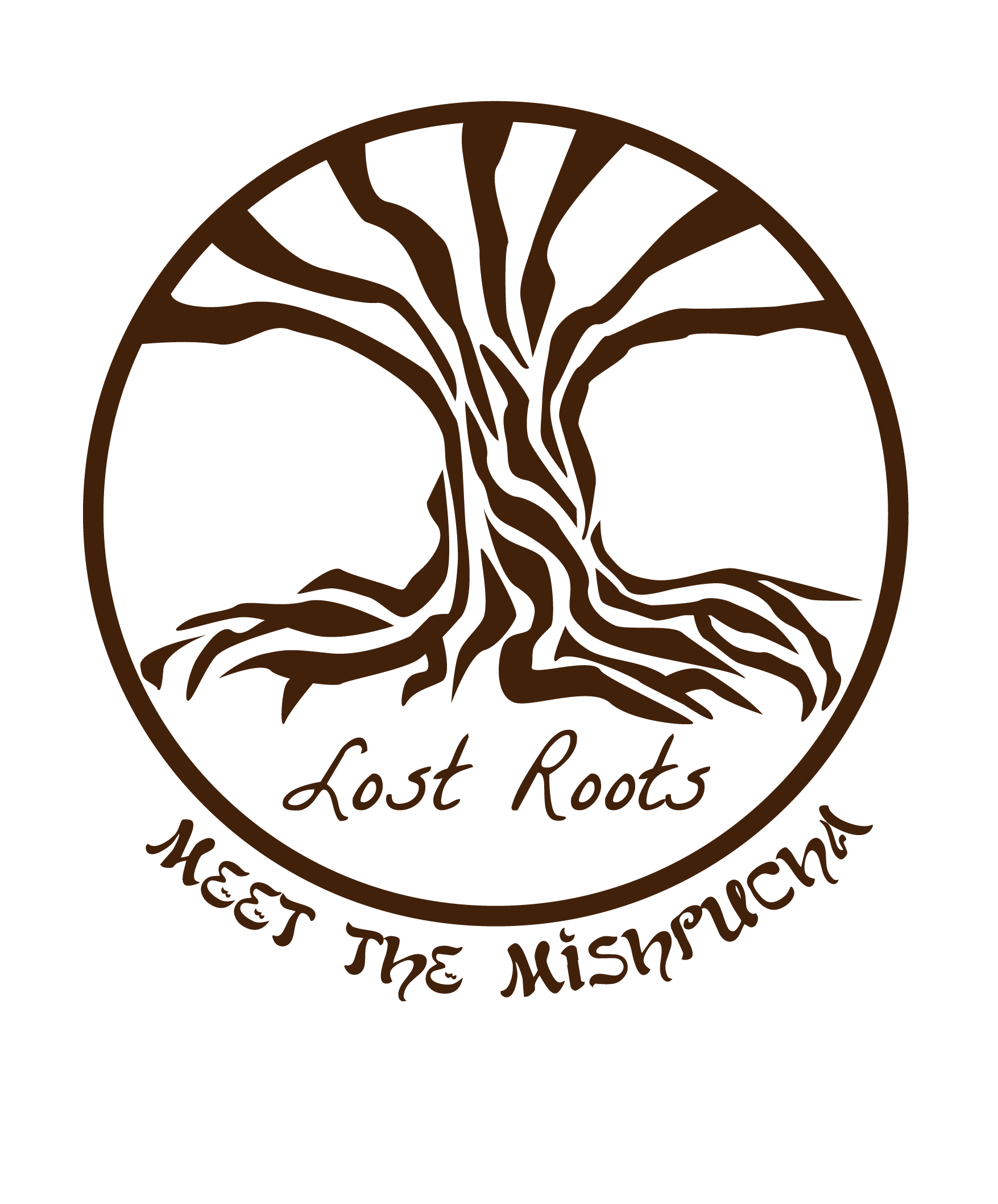Congress Poland
Tracing Jewish Families in Congress Poland
For Jewish families who originated in a region called “Congress Poland,” a wealth of genealogical information is available. Vital records for this area are exceptionally detailed and well preserved, and are complemented by a wide range of other materials. Researching Jewish families from Congress Poland is a rewarding process, yet one fraught with challenges. Read on to learn about how with a bit of luck and a lot of perseverance, you can trace the history of your family in this part of Poland back two or even three centuries.
What Is Congress Poland?
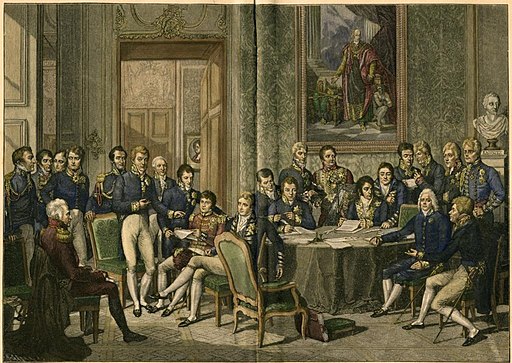
As described in greater detail on my general page on Poland, the territory of the Polish-Lithuanian Commonwealth—in which Jews had lived for centuries—was divided in the late 18th century between Austria, Prussia, and Russia. In the third and final partition of Poland, Warsaw and its vicinity were placed under Prussian control, while Lublin and surrounding areas became Austrian West Galicia.
Prussian control of the region lasted less than two decades, while Austrian rule was even shorter. During Napoleon’s march across Europe, the French emperor created the Duchy of Warsaw out of most of the Prussian-controlled areas of Poland in 1807, placing it under the king of Saxony. Two years later, Napoleon transferred West Galicia (including Lublin) to this political entity.
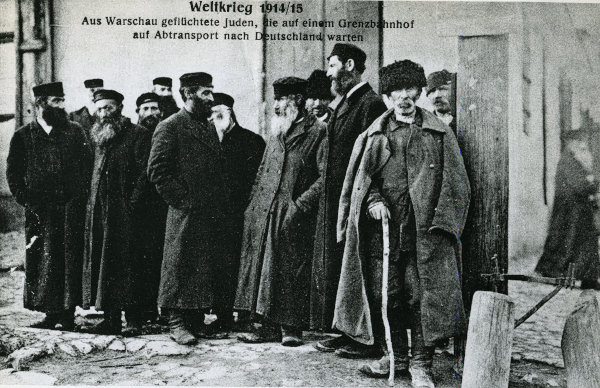
After Napoleon’s defeat, the Congress of Vienna (1815) sought to restore the map of Europe to approximately what it had been prior to the Napoleonic Wars. Among many other changes to European boundaries, the Congress of Vienna reestablished the Kingdom of Poland out of most of the former Duchy of Warsaw. The kingdom was made a protectorate of the Russian Empire and is known as Congress Poland (after the Congress of Vienna).
Although it initially enjoyed a great deal of autonomy within Russia, Congress Poland lost much of its right to self-rule following a failed uprising against St. Petersburg in 1830. After a second failed uprising in 1866, Poland lost all its remaining autonomy. Officially known as the Vistula Territory, the former Kingdom of Poland remained a fully integrated component of the Russian Empire until its dissolution in 1917.
What Records Are Available for Jewish Families in Congress Poland?
Vital Records
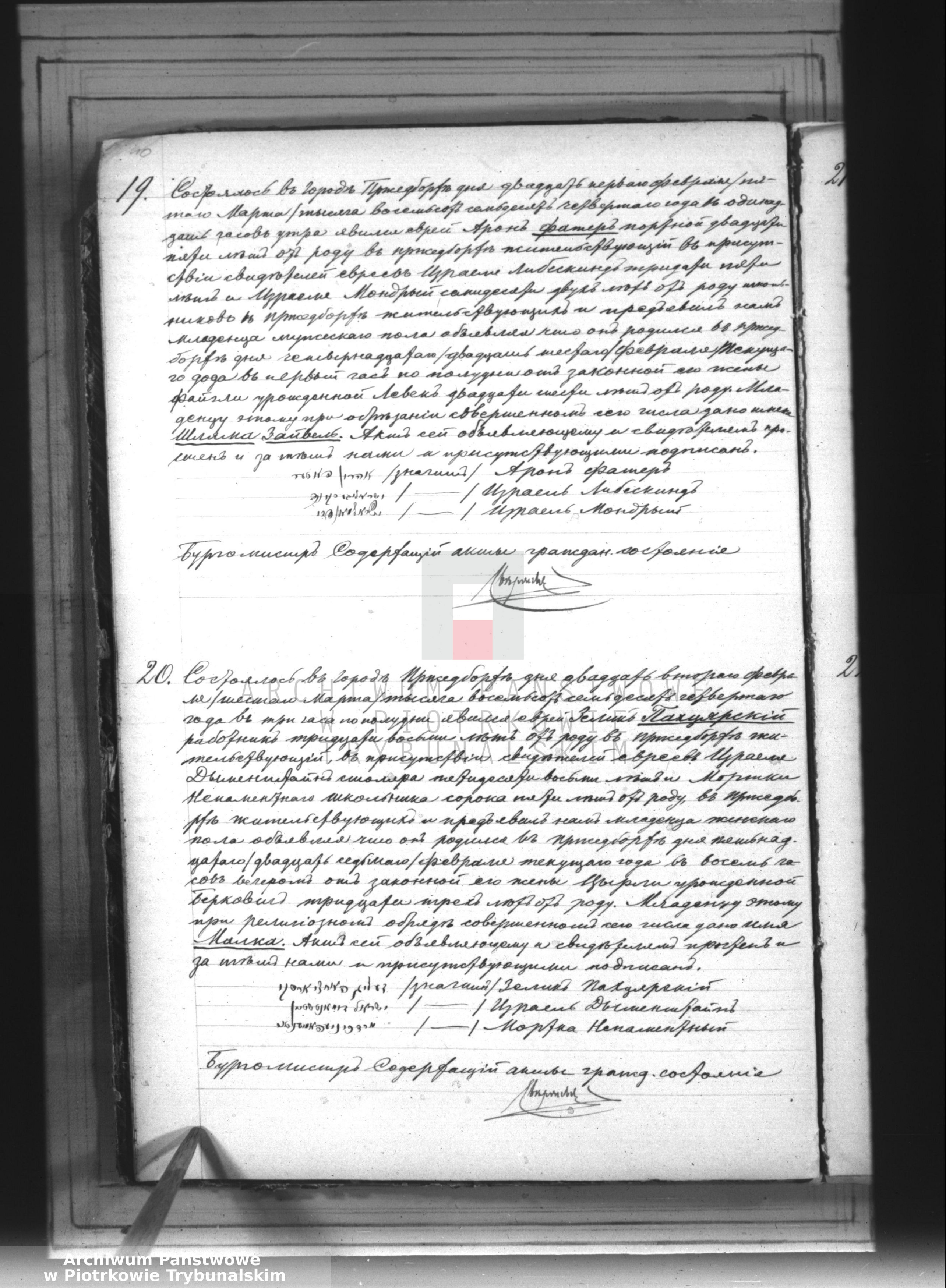
In the Duchy of Warsaw, the creation of vital records was one of the innovations introduced by Napoleon in 1808. These records were originally intended to be maintained by the state. However, since the Catholic Church had already been keeping such records for its congregants, it was given the responsibility for the collection of such records for other populations. The Napoleonic Code specified the exact format that birth, marriage, and death records were to be written in.
Jewish records were maintained by the Catholic Church from 1808 until 1825. Many, although hardly all, of these records survive. In 1825, the Napoleonic Code was repealed and replaced with the civil code of the Kingdom of Poland. Although some minor adjustments were made, the format of vital records remained very similar to that under the Napoleonic Code. However, beginning in 1826, the various religious groupings in Poland began maintaining their own vial records. Compared with other areas of the former Russian Empire, vital records in Congress Poland are exceptionally well preserved and offer a great amount of detail.
Marriage Alegata: An Underappreciated Treasure
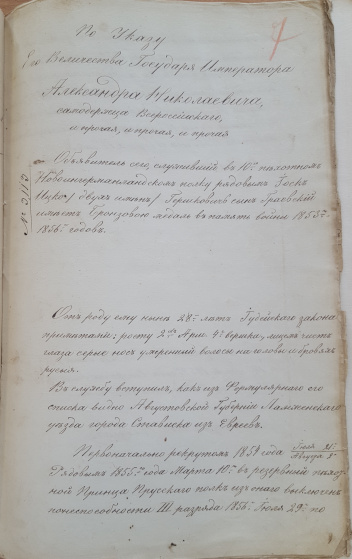
In the nineteenth century, securing official permission to marry required a considerable amount of paperwork. In some cases, this paperwork has been preserved. Known as “marriage alegata,” these files are comprised of documents that both bride and groom were required to submit at the time they married, and frequently contain additional information beyond that available in standard marriage records. Typically, birth records for both bride and groom are included—which may be invaluable in cases where originals have been lost or illegible. For individuals who were not born in the town where the marriage took place, information contained in the marriage alegata file may be the only way to locate their town of origin.
Some marriage alegata have been microfilmed by the Mormons and are available in Family History Center system. However, most have not been scanned or digitized and are unavailable online. Generally, these records are available only through the Polish Archives, and can be viewed on site or by requesting scans directly from the archives.
For more information on marriage alegata, see https://www.jewishgen.org/infofiles/poland/Q2.htm (question 20).
Population Registers
Theoretically, people in the Kingdom of Poland had the right to live wherever they wanted. However, they were officially registered to a specific location. When moving, they were required to secure official permission to transfer their residence registration to the new locality. Early in the 19th century, individuals wishing to relocate were required to obtain a release from their former place of residence stating that they had no outstanding debts or other reasons why they should not be allowed to leave. During the course of the 19th century, the set of rules regarding official residency gradually evolved, generally increasing in complexity. As a result of the often onerous bureaucratic paperwork involved, people frequently chose to move only informally, remaining formally registered to their previous location.
Systematic tracking of official residence registrations began in 1810 during the closing days of the Duchy of Warsaw and continued even after the Treaty of Versailles. Eventually, all villages and towns were required to keep books of residents listing all residents. Residence books were updated continually, rather than every ten years like American censuses. All births, marriages, and deaths were required to be reported in each family’s entry in this register.
During the period 1886-1932, two sets of books were maintained in each town: one for permanent residents and a second for non-permanent residents. (Few of the non-permanent resident books survive.) The city of Warsaw also had a third set of books devoted to temporary visitors. Additionally, Lodz and several other Polish cities maintained registration cards during the period 1918-1920 which functioned similarly to registration books.
Entries in residence books provide a wealth of information. Typically included are parents’ names, mothers’ maiden names, and dates of birth. In addition, individuals’ official places of residence, social status, religion, and occupation are indicated, as well as additional information.
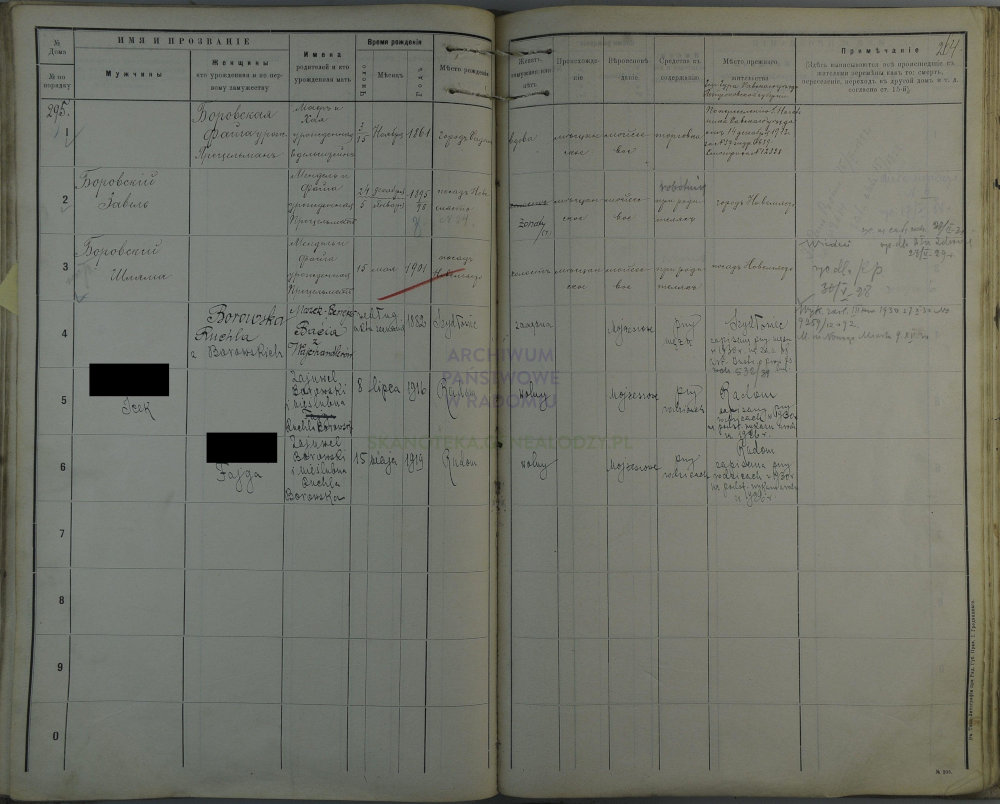
As transportation technology modernized and personal mobility increased in the twentieth century, the system of residence registration came to prove unworkable and was formally discontinued in 1932. The new systems which replaced it, termed “population mobility control books” and “population mobility control cards,” provide more detailed information on individuals than residence books. To better keep track of individuals who moved with far greater frequency than in the nineteenth century, these new registration records were organized by surname rather than by address. The records still included permanent residence registration, although this was more a theoretical holdover than a legally binding fact.
Jewish Community (“Kahal”) Records
As in nearly all other places, Jewish communities in Congress Poland produced records for their own internal use. Most Jewish community records are concerned with synagogue maintenance, while others list of financial contributors. Other community records identify donation amounts to the Jewish community. Also typically included are lists of voters in elections for community head rabbis. During the interwar period, kahal records often provided the ages and professions of candidates for memberships on the Jewish council. Unlike civic residence registration, people did not need to be officially registered to belong to a Jewish community in the location where they actually resided. Because of this, researchers can use kahal records to find out where families actually lived rather than where they were theoretically registered.
In addition to practical records, the Jewish community also maintained its own cemeteries. Tombstones provide limited but useful information on individuals, although individuals and their parents are almost always named according to Jewish religious names which may be difficult to reconcile with those given on official civil registration documents. Although the vast majority of Jewish cemeteries were destroyed during the Holocaust, books with information on some of the tombstones have been compiled for some Polish Jewish cemeteries prior to their destruction. For Warsaw, Krakow, and Lodz, partial lists of Jewish tombstones exist. Moreover, some of the largest historic Jewish cemeteries in Poland survive, including the New Jewish Cemetery in Lodz, the Okopowa Cemetery in Warsaw, and the Old and New Jewish Cemeteries in Krakow.
Other Records
Because Polish Jews were typically active in commerce during the nineteenth century, city and national business directories are a valuable resource in identifying information about one’s Jewish ancestors in Congress Poland as in other places. In addition to these directories, notary records often contain much information on Jewish individuals. Unfortunately, if there were multiple notaries in the same town, records will be catalogued by the name of the notary rather than by the name of the client. This can make it exceedingly difficult to use notary records in large cities such as Warsaw or Krakow.
In order to enter some professions, aspiring candidates were required to submit applications. These application files often contain a great deal of personal information. Another important and frequently overlooked source of genealogical information is identity cards, which were given to individuals over 14 years old and which were used as internal passports. Many of these professional and identity documents are located in old city hall records. Additionally, copies were often placed in residence registration books, so if town records did not survive or are difficult to locate, check the residence books for your ancestral town.
How to Research Jewish Families in Congress Poland
The best place to begin researching Jewish families from Congress Poland is undoubtedly JRI-Poland. One of the world’s largest Jewish genealogy databases, JRI-Poland maintains information indexed from more than six million Jewish records from across Poland. Additionally, JewishGen maintains a wide variety of Poland-specific sub-databases, most of which are relevant to Congress Poland.
In genealogy, it is vitally important to work from original records rather than only from indexes, transcriptions, or translations. In addition to ensuring greater accuracy, original records usually contain more information than is provided on indexes. Thankfully, JRI-Poland maintains or links to scans for many of the records it indexes. However, it is often necessary to use other sites in order to locate many original records identified through indexing databases. Many scans are available on FamilySearch, while others are available through Szukajwarchiwach, Genbaza, or the Polish Genealogy Society. Some genealogy records are unavailable anywhere online and are only available through archives; for such records, it is necessary to request scans directly from the Polish Archives.
Problems Unique to Researching Congress Poland
Because of the breadth of material available, it is easy to become overwhelmed. Additionally, understanding and interpreting the information contained in records requires specialized professional genealogy knowledge, including a thorough understandingof local history, Jewish and non-Jewish culture of the region, and the evolution of bureaucratic requirements specific to the area. This is as true for Congress Poland as it is for any other region. Finally, researching Jewish families in Congress Poland requires multiple languages. Because of shifting borders as well as the official Russification policy following the failed rebellion in the 1860s, researching genealogy in Congress Poland requires a knowledge of both Polish and Russian.
Summing Up
The myriad of historical documents in Congress Poland allows skilled researchers to paint a broad picture of the lives of their ancestors. Thanks to vital records, marriage alegata, population registers, and other assorted records, many details about our families can be discovered. Either on your own or with the help of a professional genealogist, genealogy research on your family can honor your relatives, help keep their memory alive, and preserve their achievements for generations to come.
